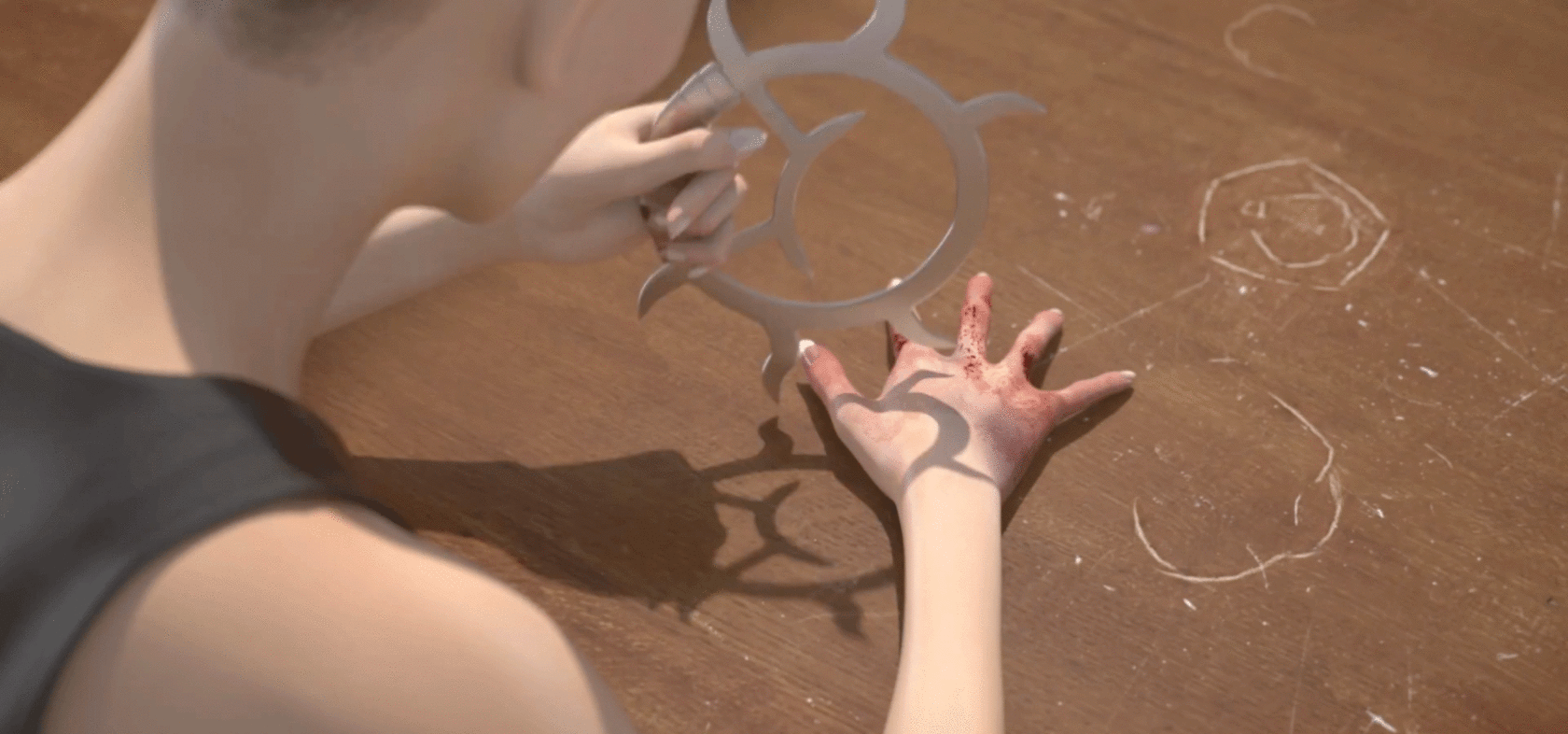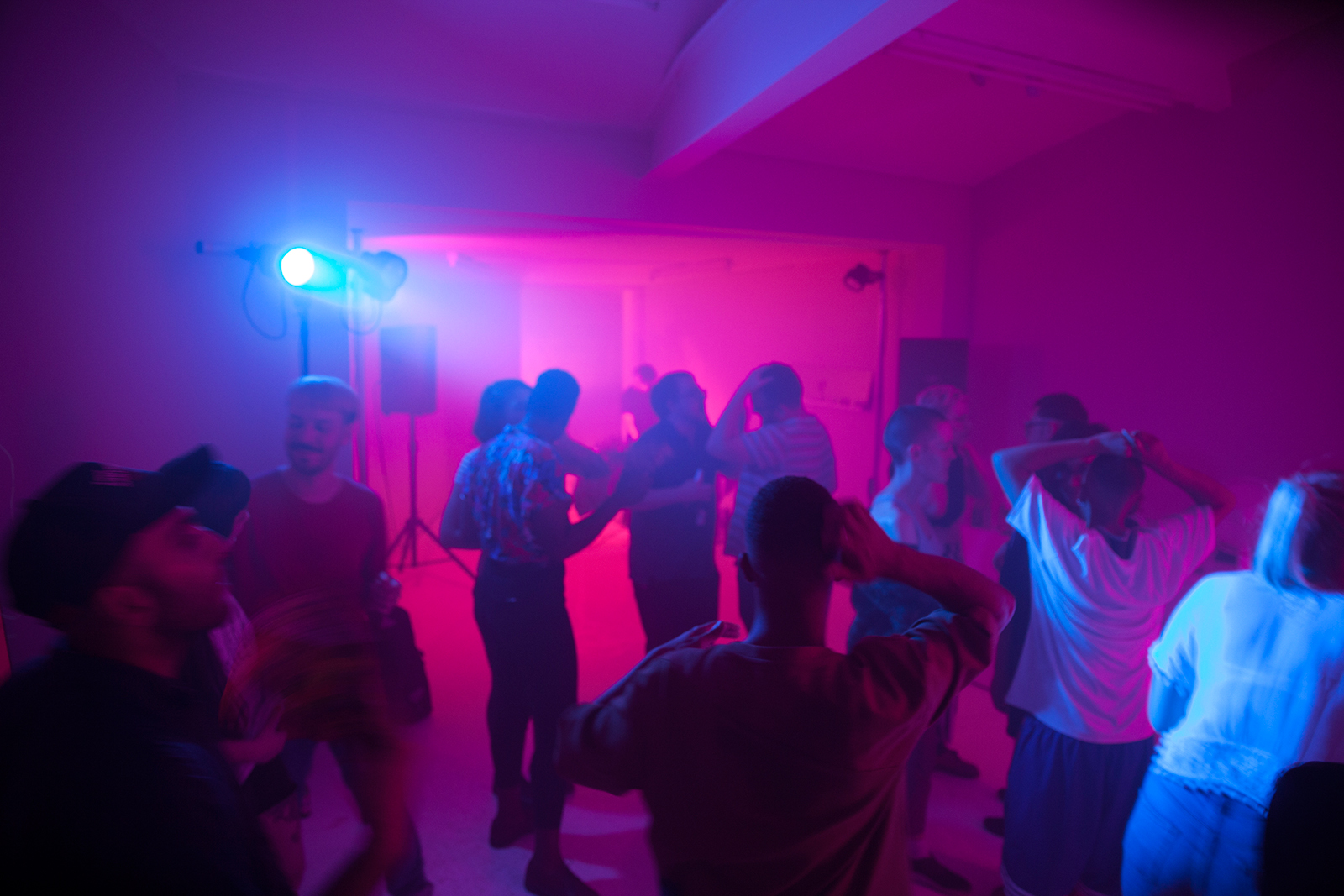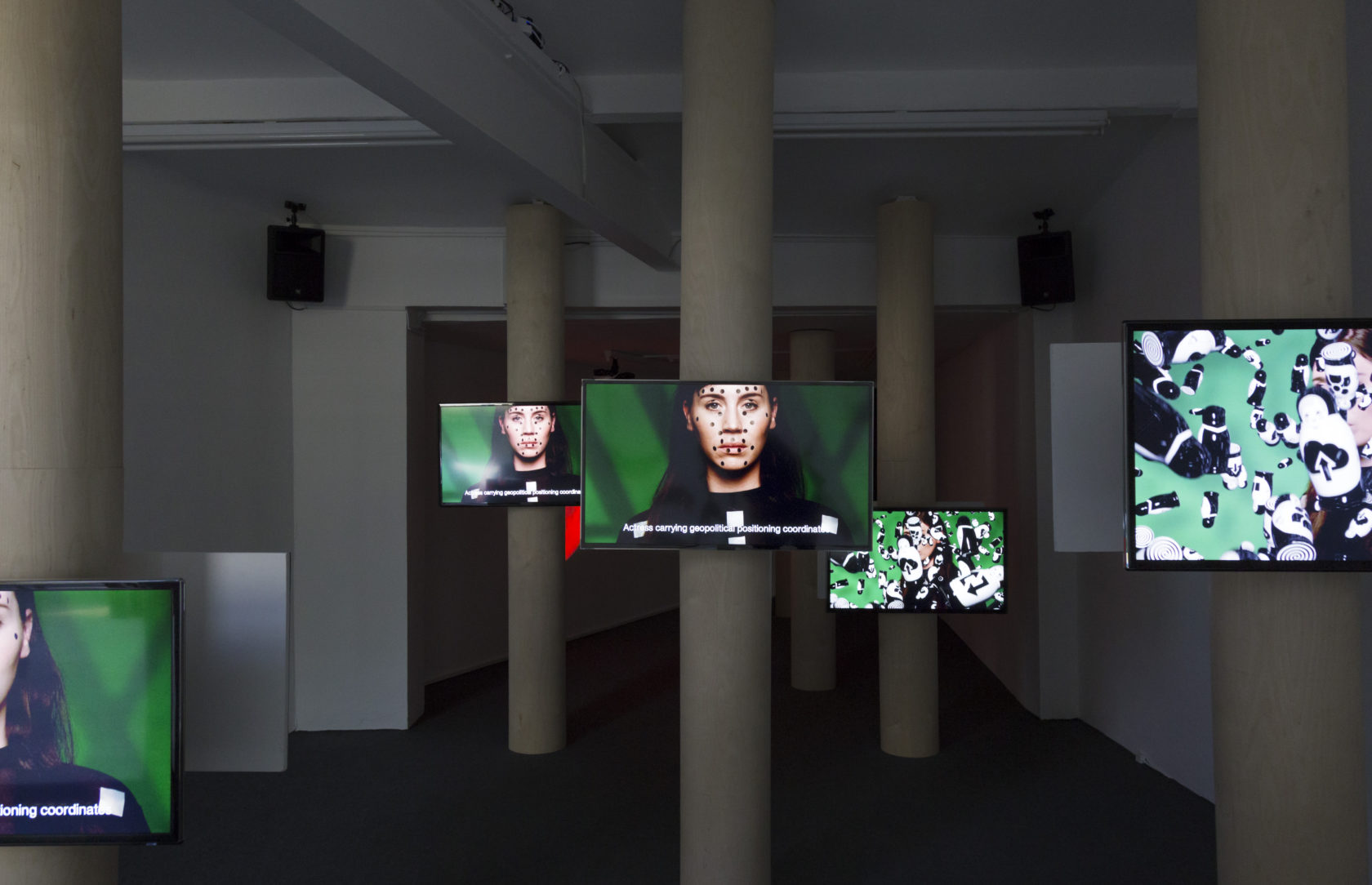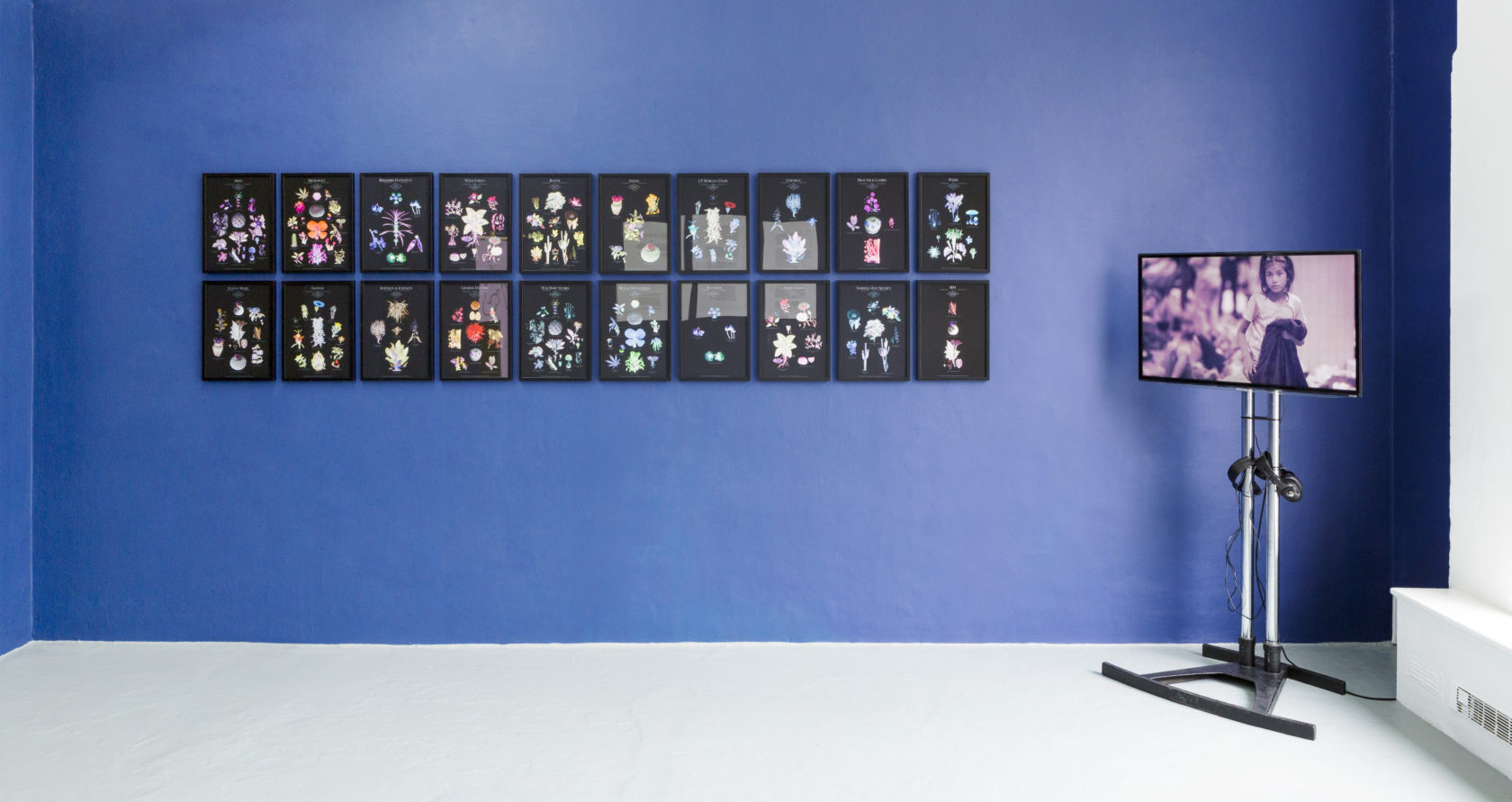Stroom Invest Interviews / Curator #5 Edward Gillman
Edward Gillman is the fifth curator in the Stroom Invest Week Interview Series. He is an artist-director of Auto Italia South East, an artist-run organisation and studio in London, alongside founding member Kate Cooper and Marianne Forrest. The organisation, founded in 2007, produces and commissions new work and organises a public program.

Edward, can you tell more about Auto Italia and your role?
Auto Italia is an artist run project and studio that is currently run by three artists, Kate Cooper, Marianne Forrest and myself. We’re in some ways unusual in the visual arts scene in London as the organisation performs a dual role as both a framework for commissioning new projects and exhibitions as well as receiving commissions to produce new artwork under the collaborative name of Auto Italia. We see the project as an artistic studio where we produce projects as a group but also oversee a programme in a public project space. Historically our work has often centred around themes of alternative labour model models and modes of production, grass-roots and collective working, offering new spaces and gender politics. These themes sit at the centre of both our public programme and creative projects, and the way in which we work with other practitioners always engages with an idea around what is possible through collaboration.
We’re very creatively involved within our public programme; in the process of bringing artists together to produce new work as well as often operating as a collaborator within the work. This role within the programme is sometimes ambiguous and we enjoy that – at times we’re very engaged in projects from the inception of new research and ideas, at others through operating as an artistic collaborator, and other playing host to artists and artist groups that we really admire.
We also receive commissions from other galleries and institutions to produce new work under the name of Auto Italia and we will often use those commissions to work with people within our public program again or to take questions that we want to explore further. So in some ways the programme becomes a model to think about research and ideas, testing things out that can be then further explored within our collaborations.
There’s a tension that we find really interesting between ‘being an organisation’ and ‘being an artist’. In many ways we’re interested in a flexibility in how we use Auto Italia through those two positions, shape shifting between being a community, an organisation, an artist, a collaboration and a space.

Are you working with British emerging artists only?
Not at all – and many of our collaborators are practitioners that may not always produce work under the guise of ‘artist’. Auto Italia has always engaged with questioning what it means for artists to have space at a moment in London where studios are entirely inaccessible to younger artists. Our collaborators might also be music video producers, coders, software developers, or other commercial producers alongside producing independent projects we may recognise within the cannon of ‘contemporary art’. We’ve always invited the skills and formats these artists are learning into the programme, exploring what alternative production and distribution formats could be for artists.
We reach out internationally and have a really strong interest in bringing artists and groups into our programme to work alongside a community of artists here in London. I think that being a shifting and evolving group of artists ourselves, many of the artists at the helm of Auto Italia over the years have been interested in reaching out to other artists’ groups operating in London and beyond. Most recently this has included presenting Metahaven’s first solo exhibition in London, a new commission by South African collective NTU; also their first UK solo show, and Syria Mobile Film Festival. The archive is really rich, and artists that have led the project in the past including Marleen Boschen, Richard John-Jones, Rachel Pimm and Amanda Dennis have all used the framework of Auto Italia to ask similar questions surrounding collective practice.
Our studio practice is always an exciting opportunity to reach out to new communities of artists too – and we often bring these artists back into our London programme. Most recently we presented a new body of work Rogue Agents at Firstdraft, Sydney. We’re already bringing these collaborators into our programme, with Angela Goh presenting a new dance performance work at Auto Italia in August 2017.


Auto Italia is now based in London, do you ever think of moving to a location outside London or even outside the UK in the future?
The climate in the UK in many respects is becoming more challenging so we have often asked ourselves this question. Years of conservative austerity has decimated a huge range of social provision in the UK – including arts funding – and there’s now a big question mark around how Brexit may affect the scene here in London. So there are compelling arguments for Auto Italia to shape shift and take a new form and structure somewhere else.
We have a certain level of privilege being in the UK/London because we’ve been regularly funded by Arts Council England since 2012. We don’t receive a enormous settlement, but it does give us a core organisational structure through which we can make Auto Italia a job. Auto Italia is now in its tenth year which is really quite phenomenal as it is so difficult to maintain space and momentum due to how extreme the neoliberal city has become. There really aren’t many examples of artist-led organisations and project spaces that have been able to continue without having to shift their focus and engage with the art market as selling galleries – as the market is so dominant here in London.
In some ways the practical consideration of survival sits at the centre of the discourse we produce. Moving from being a squatted space in Peckham through a number of donated spaces over the years, Auto Italia’s programme has reflected our own position asking what it means for artists to produce work within a condition of total precarity.
What can more established institutions or organisations learn from Auto Italia and the way it is working?
It is interesting to see how large-scale institutions are operating at the moment in the UK and how they’re responding to government austerity – and thinking about how its important to interrogate how this affects creative practice. There’s a huge focus within austerity on value for money – bigger audience numbers and financial growth equal creative and artistic value. This narrative sits right at the heart of arts and culture at the moment: the government wants an immediate financial return for its investment into the arts – its really as simple as that.
Tate Modern has tripled in size. Institutions are modelling themselves to attract philanthropic income in the American model. You even see this affecting the working practices of small- to mid-scale institutions, with pressure to obtain capital assets that can be monetised to ensure longer-term financial stability. The older charity model for arts organisations is becoming increasingly unfavourable.
At Auto Italia we’re always keen to resist that. We of course want to grow and to have long-term financial stability, however we always ask at what cost? Who are the stakeholders, partners and organisations that could enable that and how might these collaborations change the critical position from which we make work?

How did you get involved with Auto Italia?
I started to hang out at Auto Italia whilst I was studying at Central Saint Martins. Auto Italia has a big history with CSM, with two of the founding members also coming from the 4D pathway. After a while I started helping out with different projects and it grew from there. That is how we all got involved and that is important to Auto Italia. It comes from this ethos of community building, building networks and bringing emerging artists into the network. Whether it is more full time, or as a freelancer, a regularly participating artist, or a student that helps out.
Why did you decide to study in art?
I studied at Central Saint Martins because what it offered me more than anything was a framework through which you could ask questions differently. I didn’t really know what CSM was until I came to London at 18, but learning more about it I really fell in love with the idea of its history – it became a sort of object of desire to me with all of these incredible designers and producers coming from there. The idea that Versace was sponsoring people’s graduate collections and that artists like MIA had done stints within the Fine Art course it just felt really glamorous and exciting.
The course I did actually ended up being really centred around pretty hard core conceptualism which was a slightly different experience to what I expected – my interests have always been fairly pop so I sometimes wondered if I ended up at Saint Martins by chance because of this.
Is there something you want to learn, work-related?
Every time we do a project we find that we learn so much from the people we work with. In many ways the programme is a tool for us to learn and research forms of discourse and practice we want to know more about as artists. I think this defines us as different from ‘curators’. We don’t curate a programme because we’re an expert, researcher or PHD candidate with a wealth of knowledge on a particular topic – its more democratic than that.
Could you name something that really inspires you?
What inspires me at the moment in London is people that are able to open up grassroots spaces. It is really difficult to describe just how extreme the situation is in London. The space is limited and it’s not only a problem for artists, but also for the club scene, queer communities and other minority groups.
What is your advice to beginning artists?
There is something I always say when I do talks or lectures at universities (and being a relatively recent graduate myself, it’s really pertinent to my experience of being young in London) : “be strategic”. Graduated artists are really exited about leaving university, finding a cool space, programming work, and finding a way to produce work themselves.
This hedonistic 90’s mentality about the city is still really dominant but since squatting was made illegal, this way of being in the city is almost impossible. There’s still this narrative around London being this open free where you can occupy old warehouses and build communities but it’s just not true.
I think it is now more important than ever to think about a practise being more flexible and the different guises you can use to sustain making work – and it’s this that is ultimately a really exciting proposal.